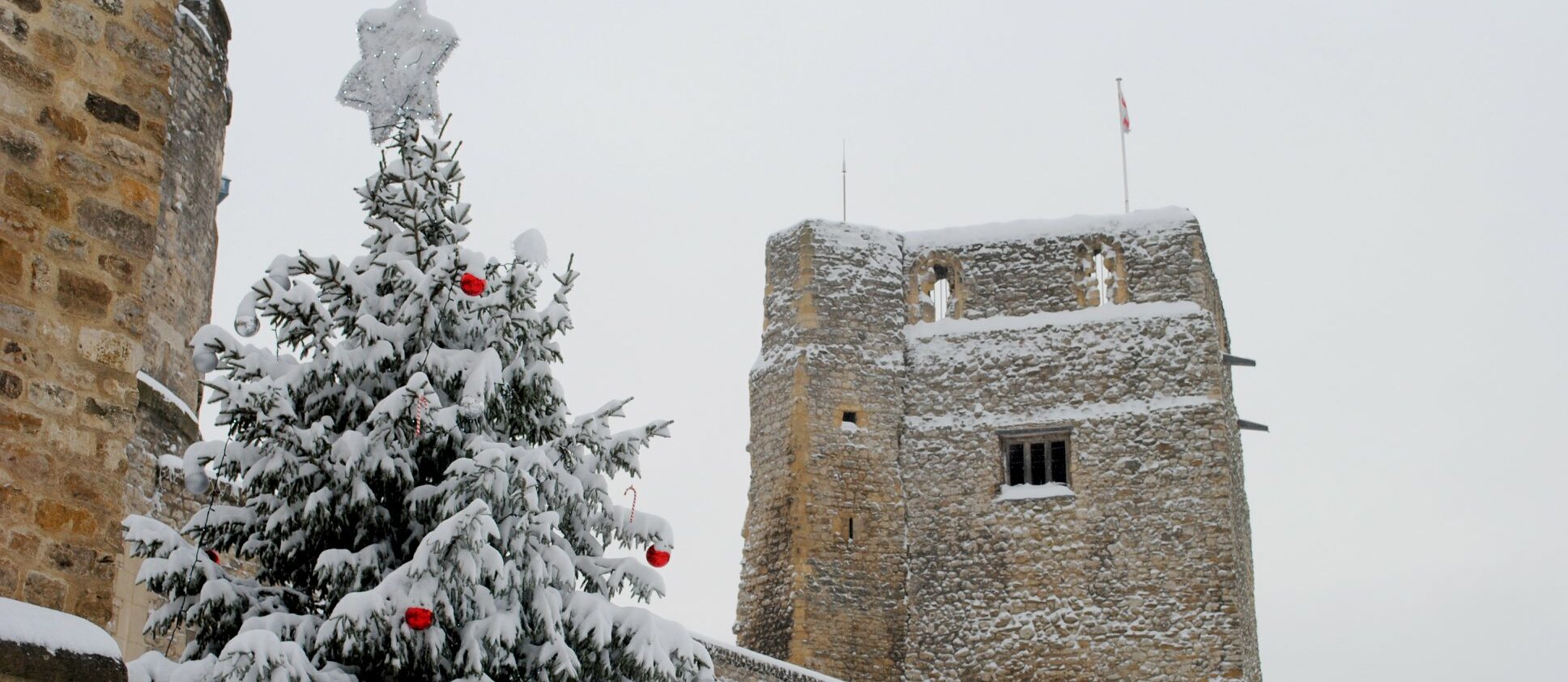 aaa
aaa
While there were many holidays in the medieval European calendar, Christmas was a highlight with twelve days of celebrations. From the peasantry to the upper class, it was the longest holiday. People would not have to go to work, decorate their homes and spend time with loved ones.
Christmas was very different during the English Civil Wars. Read more here.
Gift exchanging for the wealthy at Christmas included jewellery and fine clothes and were exchanged on both the 25th of December and the 1st of January. However, it was the food was often considered to be the best part of the celebrations. Castles would serve a huge feast in one of their most spectacular rooms, which would be decorated with festive greenery like ivy and holly. The meal would be served as an early lunch and include multiple courses. If the cooks had been aiming to really impress guests, they would have prepared something extravagant. For example, boar’s head on a platter or a swan or peacock roasted in its feathers.
Christmas was celebrated across the social classes. However, many people could not afford the luxuries of a huge feast and expensive presents.
Free labourers on estates would be given presents by their lord. This tradition developed over the centuries into servants receiving a box of presents on the 26th of December (inspiring the name “Boxing Day”).
Children would have received simple toys from their parents, such as dolls and marbles.
Peasants would have decorated their home since greenery like holly was easily found. The tradition of burning the Yule log also continued into the medieval era. This was when a large section of tree trunk would be lit on fire on Christmas Eve and kept burning for the twelve days of Christmas.
Families would treat themselves to foods they would not usually buy, such as cheese and boiled meat. They would also drink ale, which was typically brewed by peasant women.
The 1st of January was still seen as an important day, even though gifts would not be exchanged. Instead a superstition had developed where people believed that to bring good fortune in the New Year, it was important who visited a person’s home first on New Year’s Day. This was called “First-footing”.
Drinking was a large part of Christmas festivities and there are accounts of Lords worrying about riots over the holiday season.
Games were also popular, including board games like chess that are still played today.
Christmas meals were typically followed by singing carols, dancing, music and sports. Popular musical instruments included flutes, lutes and drums. The medieval version of football involved moving the ball to a predetermined location and had very few rules. People also tied the shin bones of horses to their feet to try to skate on frozen lakes during the winter.
You can celebrate Christmas at the Castle this holiday season with a lantern led tour or a visit to Santa’s Grotto. Book your tickets now: https://www.oxfordcastleandprison.co.uk/christmas-at-the-castle/

| Cookie | Duration | Description |
|---|---|---|
| cookielawinfo-checkbox-advertisement | 1 year | Set by the GDPR Cookie Consent plugin, this cookie is used to record the user consent for the cookies in the "Advertisement" category . |
| cookielawinfo-checkbox-analytics | 11 months | This cookie is set by GDPR Cookie Consent plugin. The cookie is used to store the user consent for the cookies in the category "Analytics". |
| cookielawinfo-checkbox-functional | 11 months | The cookie is set by GDPR cookie consent to record the user consent for the cookies in the category "Functional". |
| cookielawinfo-checkbox-necessary | 11 months | This cookie is set by GDPR Cookie Consent plugin. The cookies is used to store the user consent for the cookies in the category "Necessary". |
| cookielawinfo-checkbox-others | 11 months | This cookie is set by GDPR Cookie Consent plugin. The cookie is used to store the user consent for the cookies in the category "Other. |
| cookielawinfo-checkbox-performance | 11 months | This cookie is set by GDPR Cookie Consent plugin. The cookie is used to store the user consent for the cookies in the category "Performance". |
| PHPSESSID | session | This cookie is native to PHP applications. The cookie is used to store and identify a users' unique session ID for the purpose of managing user session on the website. The cookie is a session cookies and is deleted when all the browser windows are closed. |
| viewed_cookie_policy | 11 months | The cookie is set by the GDPR Cookie Consent plugin and is used to store whether or not user has consented to the use of cookies. It does not store any personal data. |
| Cookie | Duration | Description |
|---|---|---|
| _ga | 2 years | The _ga cookie, installed by Google Analytics, calculates visitor, session and campaign data and also keeps track of site usage for the site's analytics report. The cookie stores information anonymously and assigns a randomly generated number to recognize unique visitors. |
| _gat_UA-9822230-4 | 1 minute | A variation of the _gat cookie set by Google Analytics and Google Tag Manager to allow website owners to track visitor behaviour and measure site performance. The pattern element in the name contains the unique identity number of the account or website it relates to. |
| _gcl_au | 3 months | Provided by Google Tag Manager to experiment advertisement efficiency of websites using their services. |
| _gid | 1 day | Installed by Google Analytics, _gid cookie stores information on how visitors use a website, while also creating an analytics report of the website's performance. Some of the data that are collected include the number of visitors, their source, and the pages they visit anonymously. |
| CONSENT | 2 years | YouTube sets this cookie via embedded youtube-videos and registers anonymous statistical data. |
| Cookie | Duration | Description |
|---|---|---|
| _fbp | 3 months | This cookie is set by Facebook to display advertisements when either on Facebook or on a digital platform powered by Facebook advertising, after visiting the website. |
| fr | 3 months | Facebook sets this cookie to show relevant advertisements to users by tracking user behaviour across the web, on sites that have Facebook pixel or Facebook social plugin. |
| test_cookie | 15 minutes | The test_cookie is set by doubleclick.net and is used to determine if the user's browser supports cookies. |
| VISITOR_INFO1_LIVE | 5 months 27 days | A cookie set by YouTube to measure bandwidth that determines whether the user gets the new or old player interface. |
| YSC | session | YSC cookie is set by Youtube and is used to track the views of embedded videos on Youtube pages. |
| yt-remote-connected-devices | never | YouTube sets this cookie to store the video preferences of the user using embedded YouTube video. |
| yt-remote-device-id | never | YouTube sets this cookie to store the video preferences of the user using embedded YouTube video. |